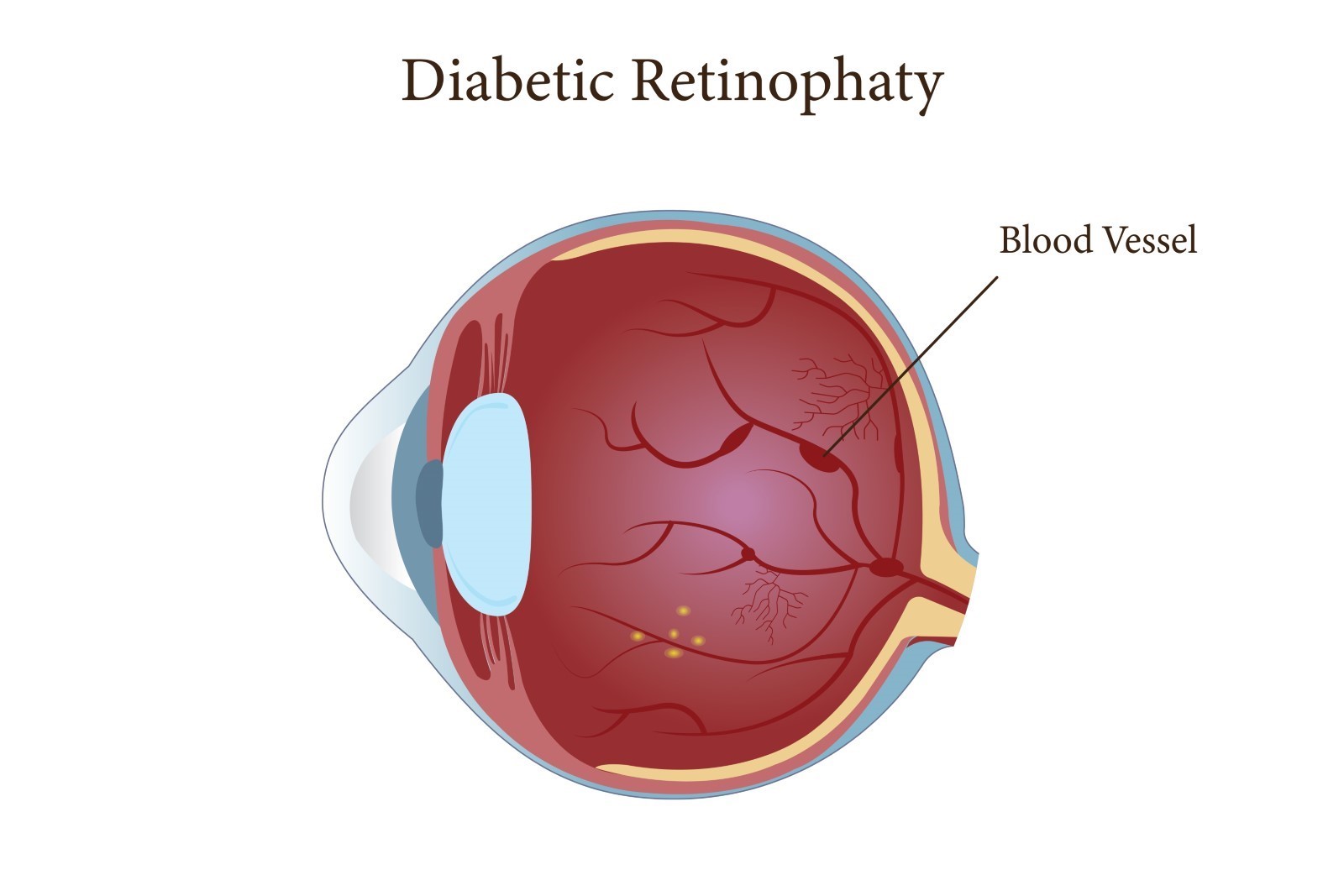Understanding Diabetic Retinopathy
Diabetic retinopathy is a condition that impacts the blood vessels in the eye’s retina. The retina is a critical part of the eye because it helps you see by processing light. When it’s damaged due to diabetes, it can lead to vision loss.
A few common causes and risk factors include: – High blood sugar levels over time can damage tiny blood vessels. – High blood pressure can increase the risk. – High cholesterol levels may contribute. – Pregnancy or genetic factors might also play a role.
Understanding how eye damage caused by diabetes can affect you is important for prevention. Early detection and treatment can help you maintain your vision.
Other Forms of Diabetic Eye Disease
Besides diabetic retinopathy, diabetes can cause other eye problems. These may include diabetic macular edema, glaucoma, and cataracts.
- Diabetic retinopathy mainly affects the retina, whereas glaucoma impacts the optic nerve.
- It’s crucial to compare these conditions to understand their differences and similarities.
Recognizing Early Symptoms of Diabetic Retinopathy
To protect your eyes, recognizing early signs is crucial. Some key warning signs include: – Blurred vision – Floaters, which appear like tiny specks or spots in your vision – Difficulty seeing at night – Colors appearing faded or washed out
Catching these signs early can lead to a better outcome. When you notice symptoms quickly, you can seek diabetic retinopathy treatment sooner. Early intervention can slow progression and preserve your vision.
Potential Complications of Diabetic Retinopathy
If diabetic retinopathy goes untreated, it can worsen. The condition can lead to severe complications, such as retinal detachment and loss of vision.
- Advanced eye damage caused by diabetes may even result in blindness.
- Damaged blood vessels can leak fluid, leading to swelling and eye damage caused by diabetes.
Recognizing these possible complications helps highlight the importance of managing your eye health meticulously.
Identifying Personal Risk Factors
Certain factors may increase your chances of developing diabetic retinopathy: – Long duration of diabetes – Poor control of your blood sugar levels – Smoking, which can harm blood vessels
Understanding how these factors affect you can help you take steps to reduce your risk.
Diagnostic Approaches for Diabetic Retinopathy
Regular eye check-ups are essential. Doctors use several tests to diagnose diabetic retinopathy: – Visual acuity tests check how well you see at various distances. – A dilated eye exam allows your doctor to see the back of your eye more clearly. – Optical coherence tomography (OCT) can provide detailed images of your retina.
- Frequent screening helps catch problems early, making diabetic retinopathy treatment more effective.
Preventive Measures Against Diabetic Retinopathy
Preventing diabetic retinopathy involves lifestyle changes such as: – Maintaining a healthy diet rich in fruits and vegetables – Exercising regularly to control your blood sugar – Keeping routine eye appointments to catch any changes early
Regular check-ups and managing blood sugar can prevent or delay the onset of this condition.
Treatment Options for Diabetic Retinopathy and DME
When it comes to treating diabetic retinopathy, several options are available: – Diabetic retinopathy treatment includes medications that help reduce inflammation and stop the growth of new blood vessels. – Laser therapy can be used to shrink abnormal blood vessels and prevent them from leaking. – Surgery might be needed if there is bleeding inside the eye.
Exciting developments are happening in diabetic retinopathy treatment, exploring more effective methods to manage and possibly reverse the condition.
Current Research and Future Directions
Ongoing research is looking into advanced ways to manage diabetic retinopathy.
- New drugs and treatments seek to reduce eye damage more effectively.
- Understanding genetic factors may lead to personalized diabetic retinopathy treatment.
Research not only helps in current management but also provides hope for future breakthroughs to eradicate the eye damage caused by diabetes entirely.


